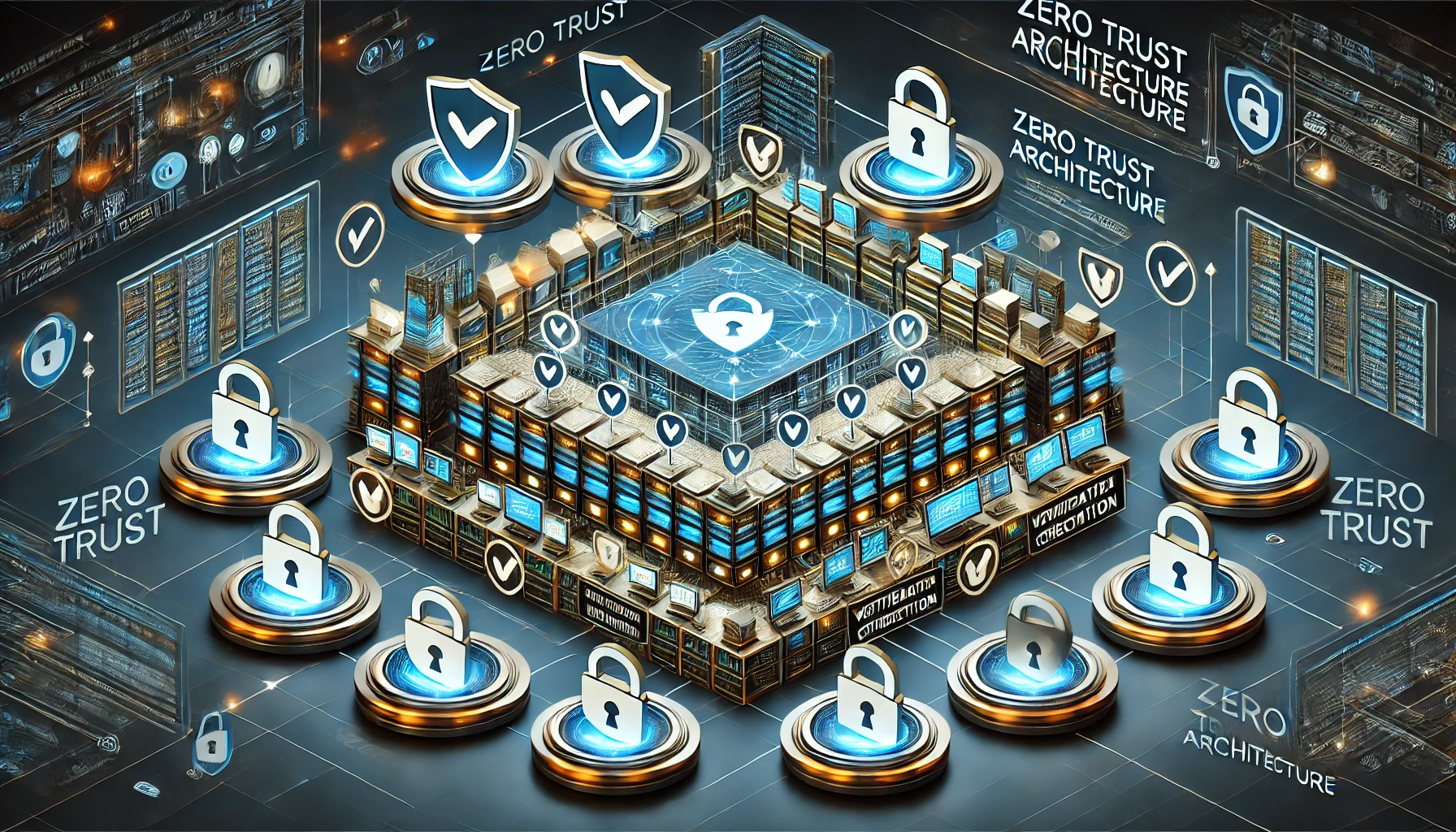"Never trust, always verify" - Understanding Zero Trust
 Hari Prassad Kannan
Hari Prassad Kannan
Introduction
In an era where cyber threats have become increasingly sophisticated, traditional security models that rely on static, perimeter-based defenses are no longer sufficient. The concept of Zero Trust emerged as a response to these growing challenges, revolutionizing the way organizations approach cybersecurity
The term "Zero Trust" was introduced by John Kindervag, a former analyst at Forrester Research, in 2010. He developed this concept after recognizing that traditional security models, which inherently trusted users and devices within a corporate network, were highly vulnerable. These weaknesses became particularly apparent as organizations increasingly adopted the internet, remote work, and cloud technologies.
In this article, let us quickly understand Zero Trust.
What is Zero Trust ?
Zero Trust is a cybersecurity framework that challenges anything inside or outside a network by default. Instead, it operates under the core principle of “never trust, always verify.”
In a Zero Trust model, no user, device, or system is trusted automatically, whether it's located inside or outside the corporate network. Every attempt to access data, applications, or resources must be authenticated, authorized, and continuously monitored.
Key Differences of Zero Trust & traditional security models:
Trust: Traditional security models trust entities inside the network, while Zero Trust continuously verifies every entity, regardless of location.
Focus: Traditional models focus on defending a static perimeter, while Zero Trust secures users, devices, and resources directly, regardless of where they are.
Flexibility: Zero Trust is designed for today’s dynamic, cloud-driven, and remote work environments, whereas traditional models are better suited for fixed, on-premises infrastructures.
Key Principles of Zero Trust
By following these core principles, organizations can establish a more robust and secure environment, mitigating risks from both external attacks and insider threats. Below are the key principles that define Zero Trust:
Never Trust, Always Verify: Before granting access, every entity must be authenticated and authorized, and their security posture must be continuously validated. This ensures that only legitimate, verified users and devices can access sensitive resources, reducing the risk of unauthorized access or breaches.
Least Privilege Access: Ensures the entities are granted the minimal level of access necessary to perform their specific tasks—no more, no less. By limiting access rights to only what is required, this principle minimizes the potential damage that could result from compromised accounts or malicious insiders.
Microsegmentation: way the organizations network is divided into smaller, secure segments, or zones, to isolate and protect sensitive resources. Instead of relying on a single perimeter, microsegmentation creates multiple security boundaries within the network, limiting access to specific users, devices, or applications based on their role and need.
Multi-factor Authentication: The layered approach that strengthens the authentication process by combining something the user knows (like a password), something they have (such as a mobile device or security token), and something they are (biometrics like fingerprints or facial recognition) which ensures enhanced security by requiring users to provide two or more forms of verification before they can access a system or resource.
Continuous Monitoring and Logging: By maintaining detailed logs of access and activity, organizations can gain insights into normal vs. abnormal behavior patterns, helping to quickly identify and mitigate insider threats, compromised accounts, or unauthorized access attempts.
Assume Breach: which operates under the expectation that security breaches are inevitable or may already have occurred. Rather than focusing solely on preventing breaches, this principle emphasizes containment, detection, and rapid response.
Device and Endpoint Security: Devices are continuously monitored and evaluated for security posture, such as whether they are up-to-date with patches, protected by antivirus software, or properly configured. Endpoint protection measures, such as encryption, malware detection, and secure configurations, are applied to reduce the risk of compromised devices being used to access sensitive systems or data.
Data Encryption: Encryption is applied not only to external communications but also to internal traffic, ensuring that data remains secure no matter where it resides or how it is transferred. This principle protects the confidentiality and integrity of data, even in the event of a breach.
Dynamic Policy Enforcement: Access control decisions are not made once but are continuously evaluated throughout a session. Policies may be adjusted based on risk factors such as unusual behavior, login from an unfamiliar location, or a device falling out of compliance with security standards. These adaptive policies help ensure that access rights are precisely tailored to the situation, granting or restricting access as necessary.
Security Across All Layers: This principle demands that security controls are implemented across all layers of the organization’s infrastructure, including:
Network Layer: Ensuring microsegmentation, secure communications, and continuous monitoring of all network traffic.
Application Layer: Implementing strong access controls, encryption, and monitoring for each application to ensure safe usage.
Data Layer: Applying data encryption, access policies, and monitoring to protect sensitive information whether it's in storage or in transit.
Endpoint Layer: Enforcing strict security policies on all devices accessing the network to prevent compromised endpoints from posing risks.
User Layer: Continuous verification of user identities through multi-factor authentication, behavioral analytics, and least privilege access.
By integrating security at every layer, Zero Trust reduces vulnerabilities across the entire IT ecosystem and ensures that no part of the environment is left unprotected.
By adopting Zero Trust, organizations gain a more adaptive, resilient, and comprehensive security posture. This model is especially effective in safeguarding against modern threats and ensuring consistent protection across complex IT environments, ultimately reducing the risk of data breaches and ensuring regulatory compliance.
Subscribe to my newsletter
Read articles from Hari Prassad Kannan directly inside your inbox. Subscribe to the newsletter, and don't miss out.
Written by
